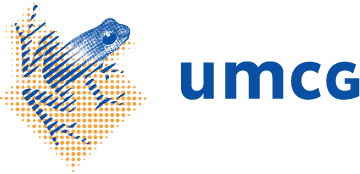De rol van de GGD in het indammen van de coronacrisis
| Datum: | 28 mei 2020 |

English translation below
Hoewel op 10 maart pas de eerste coronabesmetting in Friesland werd geconstateerd, was de GGD Fryslân eind januari al begonnen met voorbereidingen op de mogelijke komst van het virus naar de provincie. Onderschat hadden ze het virus niet, maar dat het zo’n impact zou hebben op de samenleving hadden ze niet verwacht. Margreet de Graaf, directeur Publieke Gezondheid van de GGD Fryslân, vertelt over de rol van de GGD in de coronacrisis.
Het Nederlandse systeem voor het bestrijden van infectieziekten
In Nederland hebben we een systeem voor de bestrijding van infectieziekten, waarbij het RIVM de landelijke organisatie is en de GGD de regionale. Er zijn 25 regionale GGD-en. “Bij de coronacrisis hebben we te maken met een pandemie, een infectieziekte, die zich over de gehele wereld verspreidt,” vertelt de Graaf. “Daarom is de COVID-19 geclassificeerd als A-ziekte, zodat de Minister de 25 voorzitters van de veiligheidsregio’s opdrachten kan geven ter bestrijding van deze ziekte.”
De rol van de GGD-en is erin gelegen de ziekte zo goed mogelijk in te dammen en de effecten ervan op de (volks)gezondheid zo beperkt mogelijk te houden. “In tijden van crises, rampen en incidenten kan de GGD opschalen naar de GROP-structuur. GROP staat voor GGD Rampenopvangplan. We stappen over naar het werken in de GROP-structuur als in een crisissituatie de reguliere taken en verantwoordelijkheden niet meer volledig voldoen. We scheiden dan de crisiswerkzaamheden van de reguliere werkzaamheden. Het GROP-team concentreert zich op de crisis. In dit geval staat de afdeling Infectieziekten hierin centraal.”
Samenwerking met landelijke organisaties
Op alle mogelijke manieren zijn er dwarsverbanden en overleggen tussen de verschillende organisaties, vertelt de Graaf.” In het Outbreak Management Team zit bijvoorbeeld een vertegenwoordiging vanuit de GGD-en. Tevens is er een wekelijks overleg van Directeuren Publieke Gezondheid (DPG) met de Minister. Ook zijn er portefeuilles verdeeld, zodat een aantal DPG-en ook contacten onderhoudt namens alle GGD-en met de landelijke partijen. Ik ben portefeuillehouder Informatievoorziening. In deze crisis ben ik ook verantwoordelijk voor digitalisering, monitoring en het opschalingsplan bron- en contactonderzoek.”
Landelijk beleid
De GGD Fryslân volgt de landelijke richtlijnen en regels opgesteld door het LCI (Landelijke Coördinatie Infectieziektebestrijding) en het RIVM (Rijksinstituut voor Volksgezondheid en Milieu). “Op basis van deze richtlijnen en adviezen van het Outbreak Management Team, een team van deskundigen dat de regering adviseert, worden door de regering besluiten genomen en regels opgesteld.”
Hoe kan het dan dat er in Friesland veel minder besmettingen zijn dan bijvoorbeeld in Brabant? “Dat heeft er waarschijnlijk vooral mee te maken, dat we in het Noorden eerder voorjaarsvakantie hadden, waardoor het virus in de wintersportgebieden nog niet zo wijdverspreid was als de weken daarna,” legt de directeur uit. “Tevens wordt carnaval, wat in het zuiden tot veel besmettingen heeft geleid, in Friesland weinig gevierd. Toen de maatregelen door de regering werden afgekondigd waren hier nog maar weinig besmettingen, waardoor de maatregelen hier het aantal besmettingen laag hebben weten te houden.”
Omgaan met de politiek en maatschappelijke druk
Door Corona wordt het functioneren van de GGD nauwlettend gevolgd. Kritiek was er bijvoorbeeld op het feit dat het beperkte testbeleid klakkeloos werd overgenomen van het RIVM. In hoeverre heeft iedere GGD ruimte om eigen afwegingen te maken? De Graaf: “COVID-19 is als een A-ziekte aangemerkt, waardoor de GGD wettelijke verplichtingen heeft rond de bestrijding van de ziekte. In het wel of niet opvolgen van deze verplichtingen of aanwijzingen hebben we geen ruimte om eigen afwegingen te maken. Landelijk wordt kennis en kunde van vele deskundigen geraadpleegd om tot een zo goed mogelijk advies te komen aan de regering, die op basis hiervan besluiten neemt. De regering maakt daarbij haar eigen afwegingen.”
Toch kan een GGD volgens de Graaf, binnen de door de regering gestelde regels, eigen afwegingen maken of accenten plaatsen. “Hierbij worden weloverwogen afwegingen gemaakt eventueel samen met de andere crisispartners in de GRIP4-structuur en wordt niet zomaar toegegeven aan maatschappelijke druk. Eén van de uitgangspunten is bijvoorbeeld: geen symbolische maatregelen.”
“Waar het gaat om inhoudelijke keuzes rondom infectieziektebestrijding worden er op basis van inhoudelijke afwegingen landelijke richtlijnen afgesproken in het Landelijk Centrum Infectieziekten, zoals testbeleid en bron- en contactonderzoek,” legt de directeur uit. “Per GGD is het niet de bedoeling om hier afwijkend beleid op te maken, net zomin als het de bedoeling is om per ziekenhuis als directeur besluiten te nemen die afwijken van de medisch professionele richtlijnen voor behandeling op de IC bijvoorbeeld. Als arts kan dat wel. Een richtlijn is een richtlijn en per geval of situatie kun je daar beargumenteerd van afwijken. Dit hebben we bijvoorbeeld ook bij het AZC in Sneek gedaan. De richtlijn is alleen testen met klachten. Omdat het uitvragen en vaststellen van klachten in dit geval niet betrouwbaar werd geacht, is iedereen getest. Dit is een besluit dat door de inhoudsdeskundigen beargumenteerd wordt genomen.”
Op weg naar ‘het nieuwe normaal’
“De verwachting is, dat het virus voorlopig nog wel in de samenleving aanwezig blijft tot er een vaccin is. We zullen hier dus nog maanden rekening mee moeten houden in onze gedragingen. Anders dreigt er een kans op een tweede piek. De GGD zal de komende maanden nog zeker doorgaan met het testen van verdachte gevallen. Testen en bron- en contactonderzoek gaan een nog grote taak worden. Maar ook op het gebied van advisering over hoe om te gaan met de nieuwe werkelijkheid hebben we een rol. Denk aan scholen, kinderopvang, sportverenigingen etc.”
The role of the municipal health services (GGD) in the containment of the corona crisis
Although the first corona infection was only detected in Friesland on 10 March, the municipal health services of Friesland (GGD Fryslân) had already started preparations for the possible arrival of the virus in the province at the end of January. Even though they did not underestimate the virus, they did not expect it to have such an impact on society. Margreet de Graaf, director of Public Health of the GGD Fryslân, talks about the role of the municipal health services in the corona crisis.
The Dutch system for fighting infectious diseases
In the Netherlands we have a system for fighting infectious diseases, where the RIVM is the national organization and the GGD is the regional one. There are 25 regional GGDs. “In the corona crisis, we are dealing with a pandemic, an infectious disease that is spreading all over the world,” says de Graaf. "That is why COVID-19 is classified as A disease, so that the Minister can order the 25 chairmen of the safety regions to combat this disease.”
The role of the GGDs is to contain the disease as well as possible and to keep its effects on (public) health as limited as possible. “In times of crises, disasters and incidents, the GGD can scale up to the GROP structure. GROP stands for GGD Rampenopvangplan, which means GGD Disaster Response Plan. We will switch to working in the GROP structure if the regular tasks and responsibilities no longer fully suffice in a crisis situation. We then separate the crisis activities from the regular activities. The GROP team focuses on the crisis. In this case, the Infectious Diseases Department is central to this.”
Cooperation with national organizations
There are cross-connections and consultations between the various organizations in every possible way, says de Graaf. “For example, the Outbreak Management Team includes representation from the GGDs. There is also a weekly consultation between the Directors of Public Health of the GGDs and the Minister. Portfolios have also been divided, so that a number of directors maintain contacts with the national parties on behalf of all GGDs . I am portfolio holder for Information Services. In this crisis, I am also responsible for digitalization, monitoring and the upscaling plan for source and contact research.
National policy
The GGD Fryslân follows the national guidelines and rules drawn up by the LCI (National Coordination of Infectious disease control) and RIVM (National Institute for Public Health and the Environment). “Based on the guidelines and advice from the Outbreak Management Team, a team of experts who advise the government, the government makes decisions and sets out rules.”
How is it possible that there are far fewer infections in Friesland than, for example, in Brabant? "That is probably mainly due to the fact that in the North, we had spring break a week earlier, at that time the virus was not as widespread in the winter sports areas as in the weeks afterwards,” explains the director. “Also, in Friesland, carnival, which has led to many infections in the south, is not really celebrated. When the measures were announced by the government, there were only a few infections here and the measures managed to keep the number of infections low.”
Dealing with political and social pressure
Due to the Corona crisis, the functioning of the GGD is closely monitored. There was criticism, for example, that the limited test policy was taken over indiscriminately from RIVM. To what extent does each GGD have room to make its own assessments? De Graaf: “COVID-19 has been classified as an A disease, which means that the GGD has legal obligations with regard to combating the disease. In whether or not to follow these obligations or instructions, we have no room to make our own considerations. Nationally, knowledge and expertise of many experts is consulted in order to provide the best possible advice to the government, which takes decisions based on this. The government makes its own considerations in this regard.”
Nevertheless, according to de Graaf, a GGD can, within the rules set by the government, make its own considerations or place accents. “Deliberate considerations are made in this context, possibly together with the other crisis partners in the GRIP4 structure, and simply giving in to social pressure is not done. One of the basic principles is, for example: no symbolic measures.”
"When it comes to substantive choices regarding infectious disease control, national guidelines are agreed in the National Center for Infectious Diseases, such as test policy and source and contact research" explains the director. “For each GGD it is not the intention to draw up a different policy, like it is not the intention to make decisions per individual hospital by its director that deviate from the medical professional guidelines for treatment at the ICU, for example. As a doctor you can deviate. A guideline is a guideline and you can deviate from it on a case-by-case basis. We also did this at the reception centre in Sneek. The guideline is only testing with complaints. Because the questioning and determination of complaints was not considered reliable in this case, everyone was tested. This is a decision that is substantiated by the content experts.”
On the way to "the new normal"
"The expectation is that the virus will remain in society for a while until there is a vaccine. So we will have to take this into account in our behavior for months to come. Otherwise there is a risk of a second peak. The GGD will certainly continue testing suspect cases in the coming months. Testing and source and contact research will be an even bigger task. But we also have a role in advising on how to deal with the new reality. Think of schools, childcare, sports clubs, etc.”



